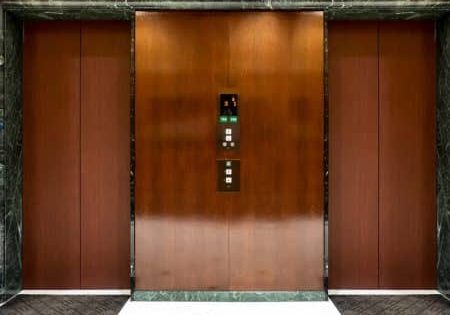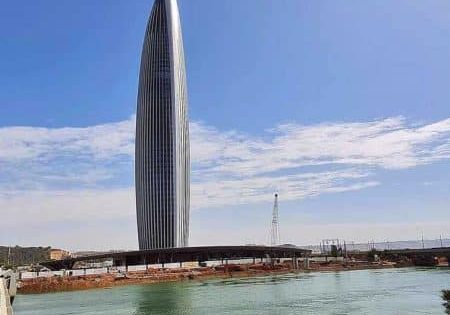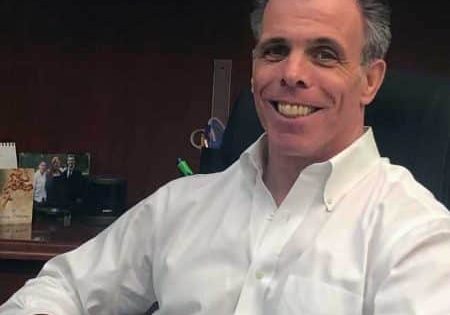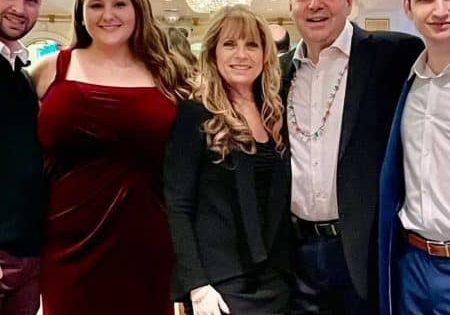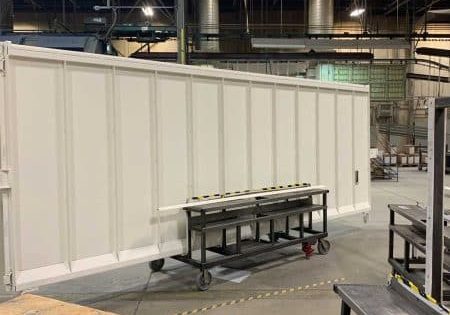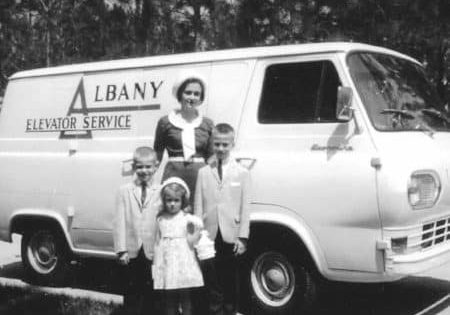Riding the Wave
May 1, 2024
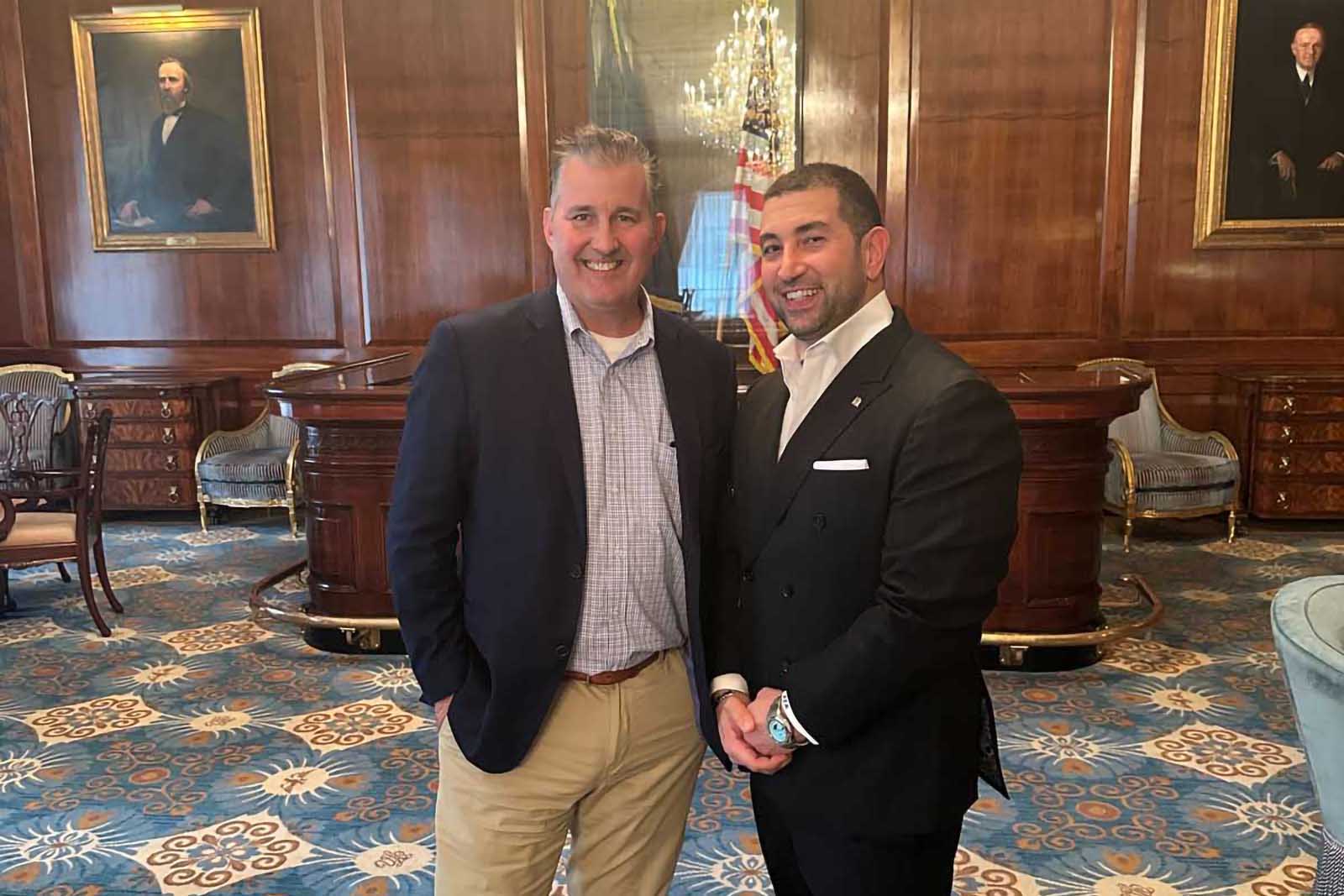
A conversation with Dynasty Elevator President John Mezzo
Stopping in NYC in late February prior to heading to India for the Smart Lift & Mobility World 2024 expo, your author (TBM) had the pleasure of sitting down with John Mezzo (JM), president of Manhattan-based Dynasty Elevator. The company and its president have risen quickly in the elevator world since Dynasty’s inception nearly five years ago. Mezzo has become active in both the NYC metropolitan area vertical-transportation community and the National Association of Elevator Contractors (NAEC). Fittingly, he hosted your author at the esteemed Union League Club on the corner of Park Avenue and East 37th Street in Manhattan. Since 1931, the private social club has welcomed major figures including U.S. President Ronald Reagan, and, since the club’s founding in 1863 by American Union supporters (it has had four locations), has counted among its members historical figures such as American former astronaut and engineer Buzz Aldrin and several U.S. presidents. In the club’s stately surroundings, Mezzo took the time to talk about his life, family, career trajectory and the state of the industry. Below is an excerpted version of our conversation.
TBM: You worked for OEMs and now run your own business. Give me a little background on that.
JM: When I was getting my degree in mechanical engineering at the University of Hartford in Hartford, Connecticut, I became friends with a guy in one of my classes who just happened to be an executive at Otis. I was looking for an internship, and he connected me with the national head of engineering for Otis North America. Through that, I got an internship as an elevator test engineer for Otis in Bloomington, Indiana. I was in my early 20s and spent three months in Bloomington between my junior and senior years. When I graduated, I just went right into it, joining Otis’ worldwide engineering department in Farmington, Connecticut.
TBM: Have you had any mentors who helped get you to where you are today?
JM: Luciano Mozzato (former vice president [VP] of Otis Global Operations) is definitely one of them. He told me, “Go into engineering and learn the product, then go into the field and learn the business.” So, that’s pretty much what I did. I studied engineering and then I started selling elevators, but selling elevators is only useful if you can install the things you’re selling. He stressed that you need to put in the time to learn operations and how things work in the field, which is a lot different from the perfect conditions you have when you are designing in an office or installing and testing in a test tower.
In an elevator company sales territory, you typically have a superintendent and a sales representative. I started out doing new installation sales in Las Vegas, and then I worked on Otis’ MGM Resorts® portfolio as the sales rep, and my superintendent was a gentleman named Bob Lindley. He’s still out there today. He taught me all about the service side of the business, all of which was new to me. Bob took me under his wing and showed me all the ins and outs of the service operations. We also had some great mechanics, and I learned a lot spending time in the field with them. Bob and I still talk from time to time after nearly 20 years.
TBM: Have you ever worked for an independent elevator company other than yours?
JM: No. I was at Otis for the majority of my career. I went from Bloomington to Farmington to Vegas to Reno to Manhattan. Then I moved over to Schindler and was a branch manager for existing installations and modernizations, all in the NYC metropolitan area. I went out of my way to work in all facets of the business before doing something on my own because you’ve got to master your craft if you’re going to make a leap like that.
TBM: How do you feel about being part of the elevator industry?
JM: I like it, and I’m good at it. It’s a very niche industry. It’s a great business, and there is always a need. The elevator business went through the pandemic fairly unscathed compared to a lot of others. People still need to get up and down in all these buildings. I just kind of ride the wave and see where it takes me.
TBM: Where are you from, and where have you lived?
JM: I was born in New Brunswick, New Jersey, and grew up in East Brunswick (Township). I had a lot of family in Brooklyn, NY, and everybody came over to each other’s houses. My wife, kids and I eventually moved to Westchester. I still have a lot of family in East Brunswick. I moved around the country for work, and it was nice to get the opportunity to come back home.
TBM: Tell me about your family.
JM: My dad was an accountant, a partner at Ernst & Young for many years and a great man. He was diagnosed with pulmonary fibrosis, which is a significant degenerative lung disease. He received a lung transplant, which is the only current treatment for the condition. He kept going for about a year and half, but unfortunately he passed away a few years ago. That was very tough for me, but it’s what happens in life. On a positive note, I put on a (pulmonary fibrosis research) fundraiser golf outing every year as a memorial to him. The third one is coming up in June.
My wife and I have two boys who are 9 and 6. We enjoy sports, video games and eating out at restaurants. I’m a big steak and wine guy. I play a lot of golf and, when I can, go snowboarding. For a long time, my family had a house in Stratton, Vermont, and it was so much fun to go there for long weekends to ski, hang out and even do some work. We’ve since sold the house, but still visit the area from time to time.
Every week, my family and I like to go eat at this little Italian place in town. During COVID, after probably about three months of being stuck inside, I was losing my mind. So, I called my buddy who owns the restaurant and said, “I’ve got to get out of the house.” At the time, restaurants weren’t open for dine-in, but he let us in the back door and closed the blinds. I think it was Mother’s Day 2020. He had basically turned the entire restaurant area into storage, but we didn’t care. He cleared space around a little table next to the bar, and we had boxes piled up all around us. It was just the four of us eating by candlelight, and that was a fun, fun night.
TBM: Tell me a little more about Dynasty. How is it structured? Is it a partnership, or are you the main guy?
JM: It’s me and my partner (Dynasty Elevator VP Mike Fairclough). Basically, I bring in the sales and he gets ‘em done. He was a longtime modernization guy and is the best at getting quality jobs installed on time. We’ve got two employees in the office now who are just doing straight business development and sales. We’ve got another employee onboard now, elevator constructor Matt Carroll, who’s helping run the jobs because we have so many. We’ve expanded our team a lot this year. So far, so good.
TBM: Tell me a little about your experiences with NAEC.
JM: I like going to their events and appreciate what they do for the industry. It’s great for a contractor to get facetime with a supplier to learn about their products and the things they offer. One of the NAEC committees is NexGen, which helps develop the next generation of elevator professionals. I started going to NexGen events and ended up becoming the 2024 chairman, which is a great opportunity to keep people motivated. It’s important that we train and develop young talent. The OEMs have their big, national training programs, but hardly anyone except NAEC is doing that for the independents. I think NexGen is a good recruitment tool, as well.
TBM: What’s your opinion of the whole private equity, conglomerate thing that’s happening in the industry?
JM: If you’re selling, it’s great, but if you’re not, it doesn’t make things easier. When someone comes in and buys a whole bunch of units, you’re going to lose some customers because you can’t onboard 2,000 elevators and deliver the same level of service as before. It just doesn’t happen. I do like what’s happening on the supplier side with companies becoming part of the same entity and being able to offer packages like machines and controllers together. Being able to streamline an order is great. The scenario is changing every day, and I’m just going to see where it goes.
TBM: Tell me a little about the day-to-day management of your business.
JM: We have an online system with an app that we use for basically everything, and it’s great. It handles everything from prospecting to quoting to job management and time tracking to billing and collections. It syncs with our QuickBooks, as well, which is our accounting system. Basically, you put a customer in and do a quote right out of that system. Then, sales are converted to jobs, and you input everything about the job and the hours and send it to a mechanic’s phone. They check in, go to the job and report progress digitally. Some flexibility — such as for routes — is built in. When they’re done, the app issues a reminder to bill it out and later, follow up on invoices. So, we have pretty much a turnkey system with everything in one spot. It is a huge time saver having all of these functions in one system.
TBM: What is your biggest revenue driver?
JM: Right now, it’s modernization. These are high-dollar contracts. We have a significant service portfolio that is continuously growing, which is great. We do a good amount of work on Long Island and some of the surrounding area. We’re bidding jobs in Connecticut all the way down to Baltimore, and are getting closer to doing some deals in Delaware. Predominately, though, we focus on NYC, Long Island and southern Westchester (County).
TBM: What are your goals for yourself and the company? Don’t tell me you are going to sell!
JM: No, no, no. I mean, we’ve been approached a couple of times, but Mike and I are going to take this as far as we can and leave it for our kids. If the kids want in, great. If they don’t, we’ll figure it out. Actually, though, I don’t see myself retiring anytime soon. I like doing what I do and running this business. I like to win, and I need routine. I get up every day and work out from 5 to 6 a.m. and get home at 7 p.m. or later. That was a challenge for me during COVID — getting up every day and putting on sweatpants then staring at the laptop for Zoom meetings all day. That’s only good once in a while. I couldn’t wait to start having real meetings in person and not talking to my camera in a button-down shirt and basketball shorts. I felt ridiculous.
Get more of Elevator World. Sign up for our free e-newsletter.




